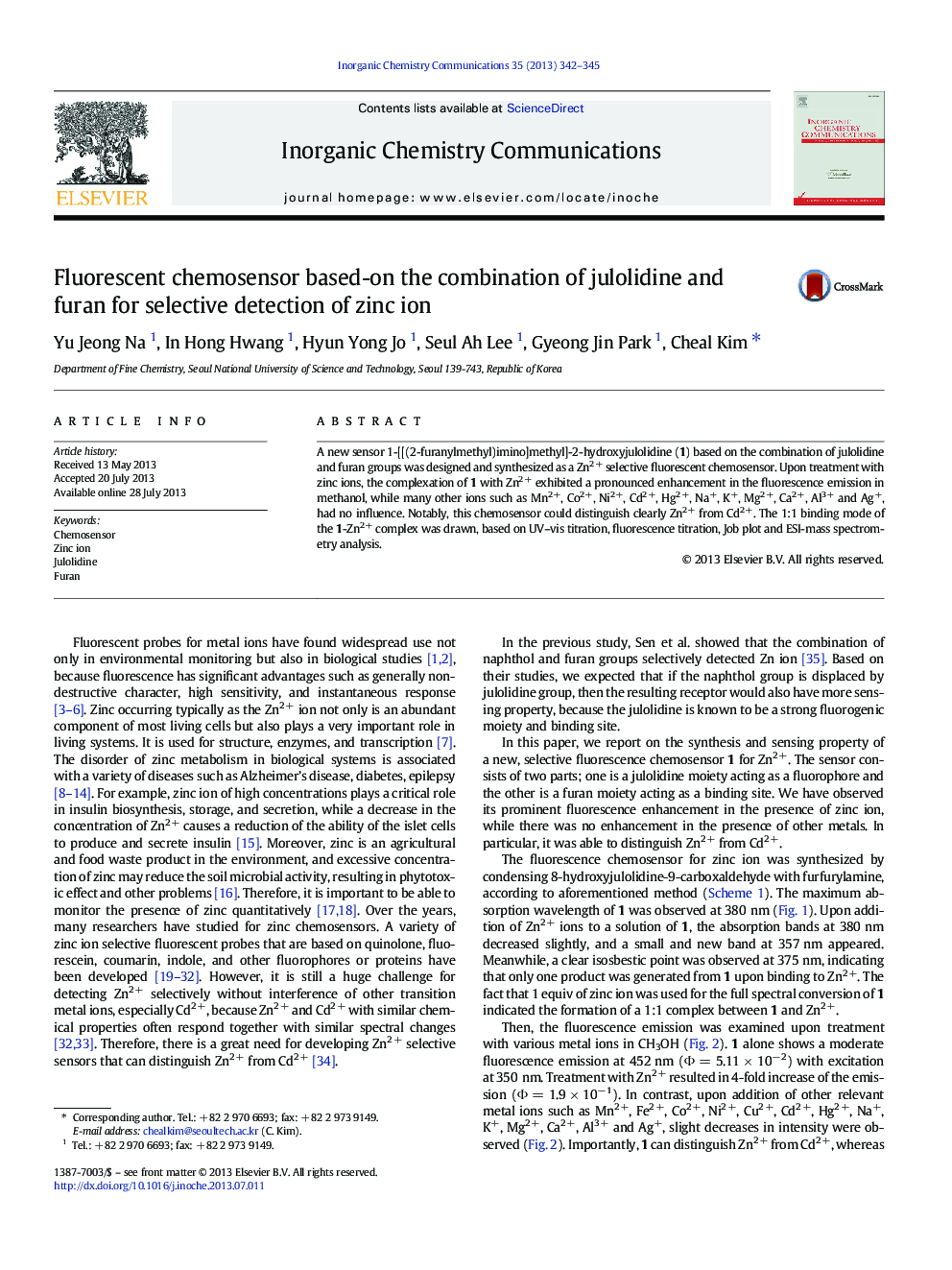| Article ID | Journal | Published Year | Pages | File Type |
|---|---|---|---|---|
| 1303892 | Inorganic Chemistry Communications | 2013 | 4 Pages |
•A new sensor for Zn2 + has been synthesized and characterized.•The sensor selectively sensed Zn2 + through fluorescence.•The sensor was able to distinguish Zn2 + from Cd2 + commonly having similar properties.
A new sensor 1-[[(2-furanylmethyl)imino]methyl]-2-hydroxyjulolidine (1) based on the combination of julolidine and furan groups was designed and synthesized as a Zn2 + selective fluorescent chemosensor. Upon treatment with zinc ions, the complexation of 1 with Zn2 + exhibited a pronounced enhancement in the fluorescence emission in methanol, while many other ions such as Mn2 +, Co2 +, Ni2 +, Cd2 +, Hg2 +, Na+, K+, Mg2 +, Ca2 +, Al3 + and Ag+, had no influence. Notably, this chemosensor could distinguish clearly Zn2 + from Cd2 +. The 1:1 binding mode of the 1-Zn2 + complex was drawn, based on UV–vis titration, fluorescence titration, Job plot and ESI-mass spectrometry analysis.
Graphical abstractA new sensor 1-[[(2-furanylmethyl)imino]methyl]-2-hydroxyjulolidine (1) based on the combination of julolidine and furan groups was designed and synthesized as a Zn2 + selective fluorescent chemosensor. Notably, this chemosensor could distinguish clearly Zn2 + from Cd2 +.Figure optionsDownload full-size imageDownload as PowerPoint slide
